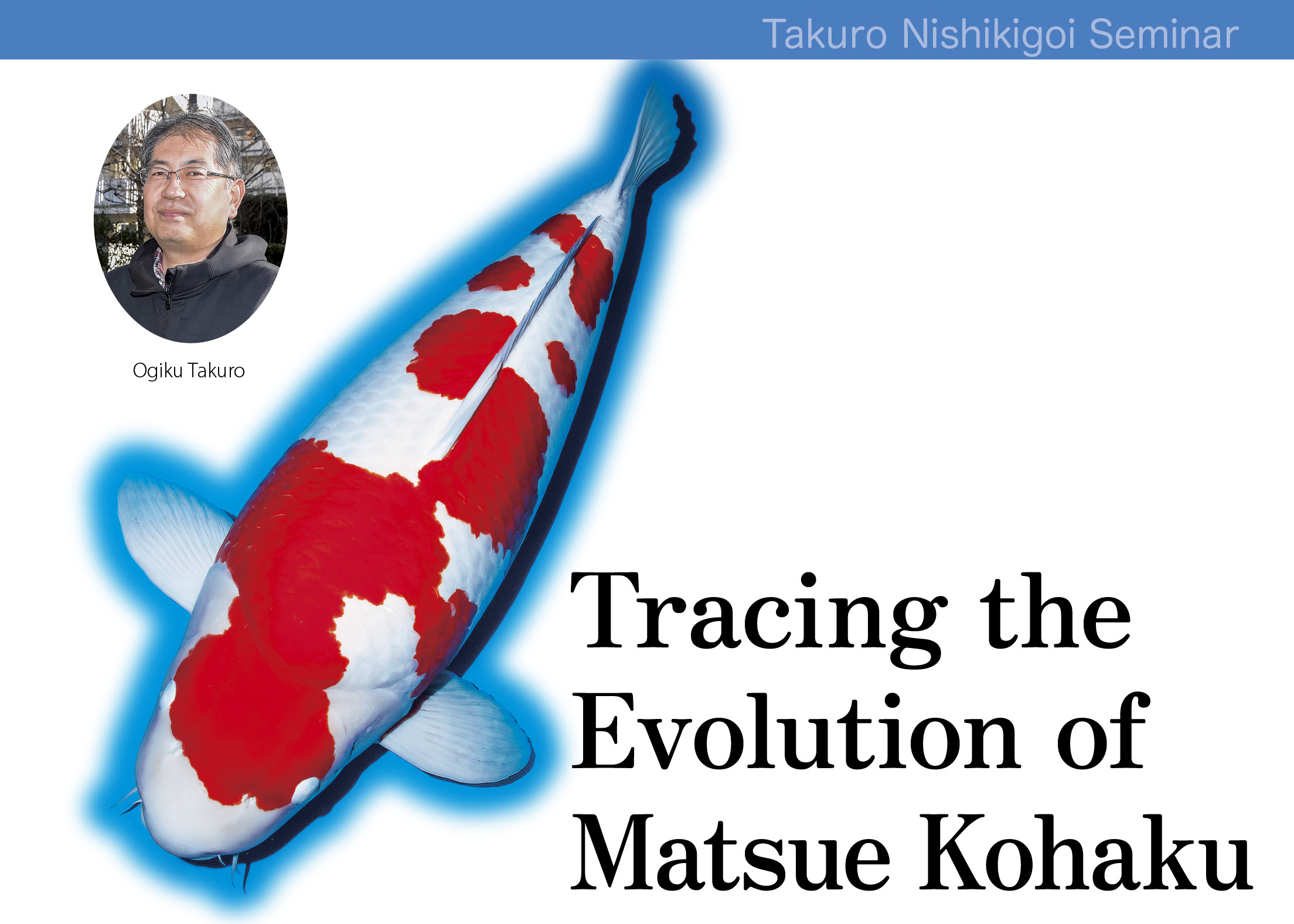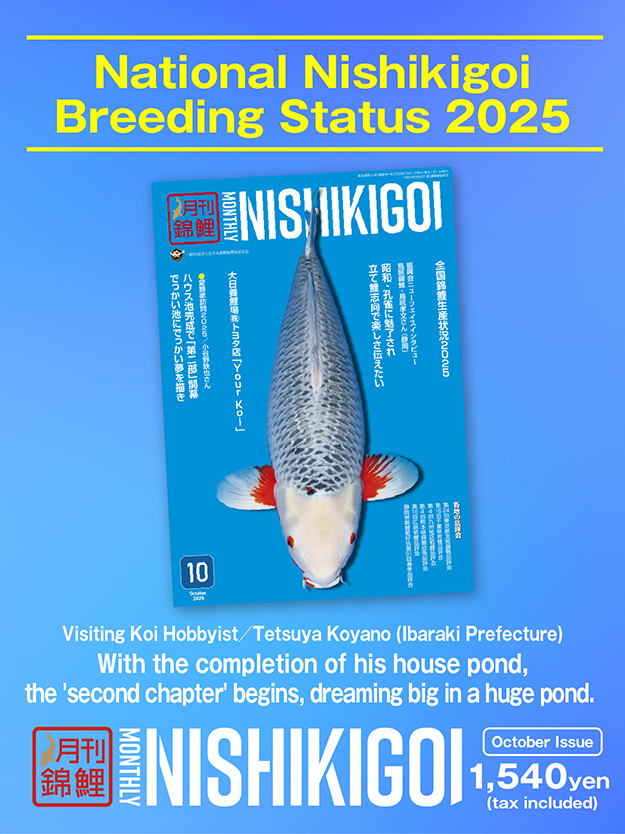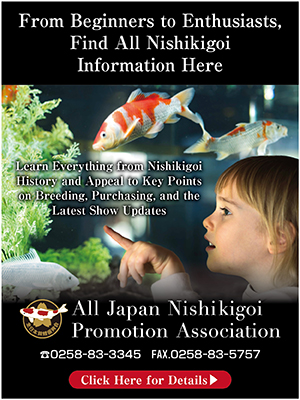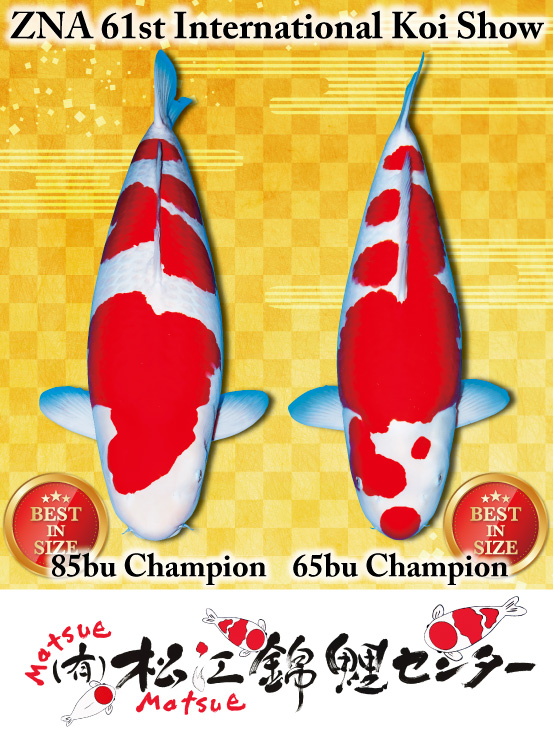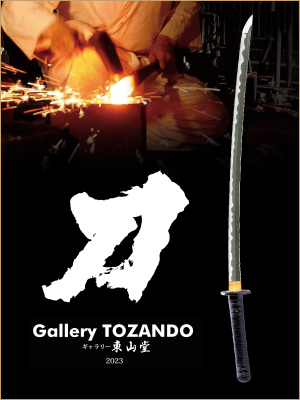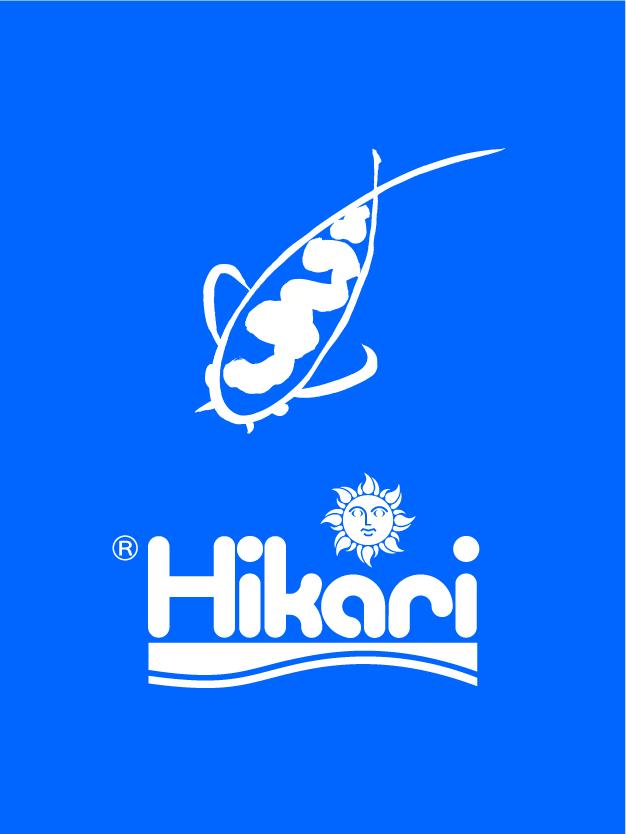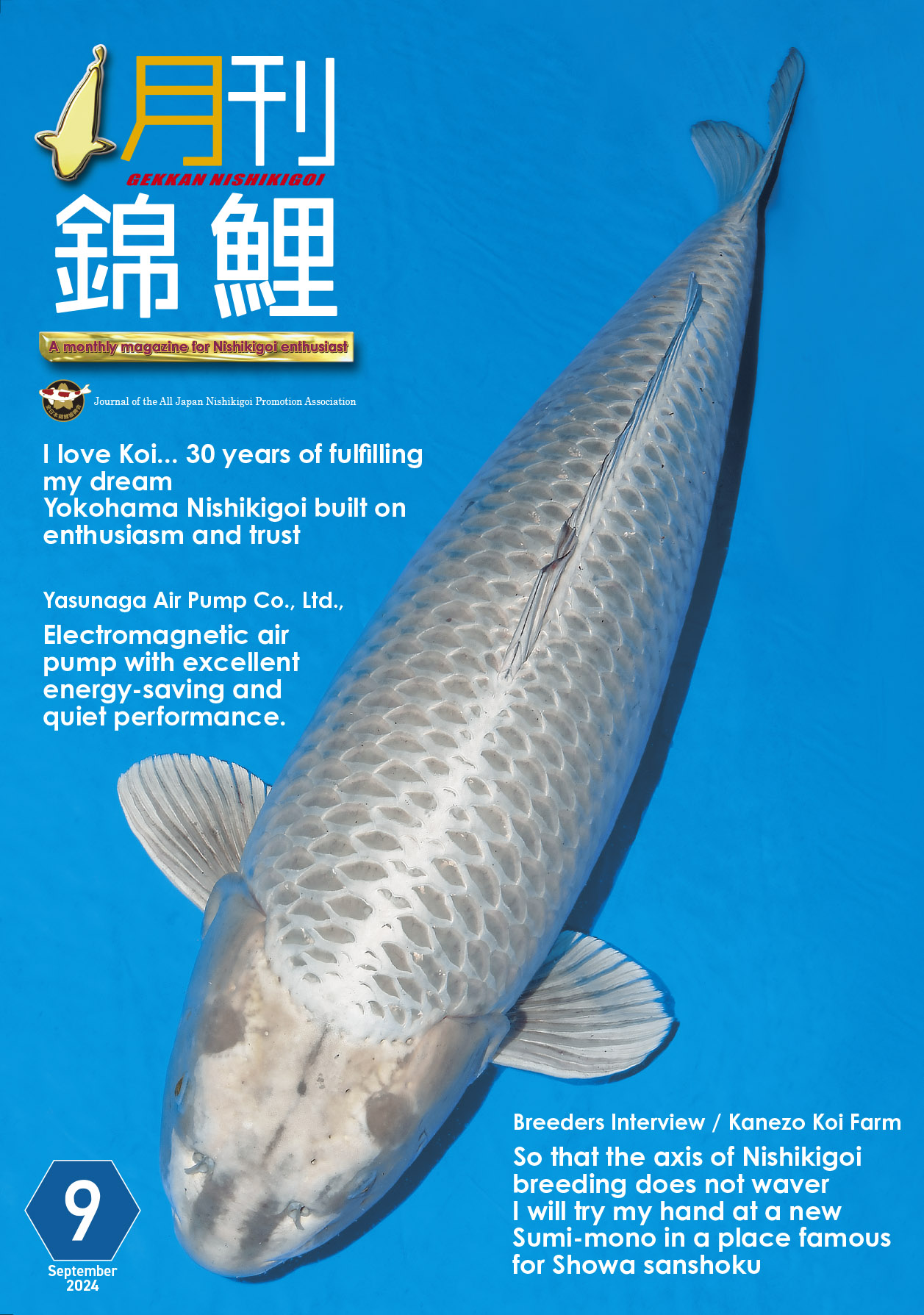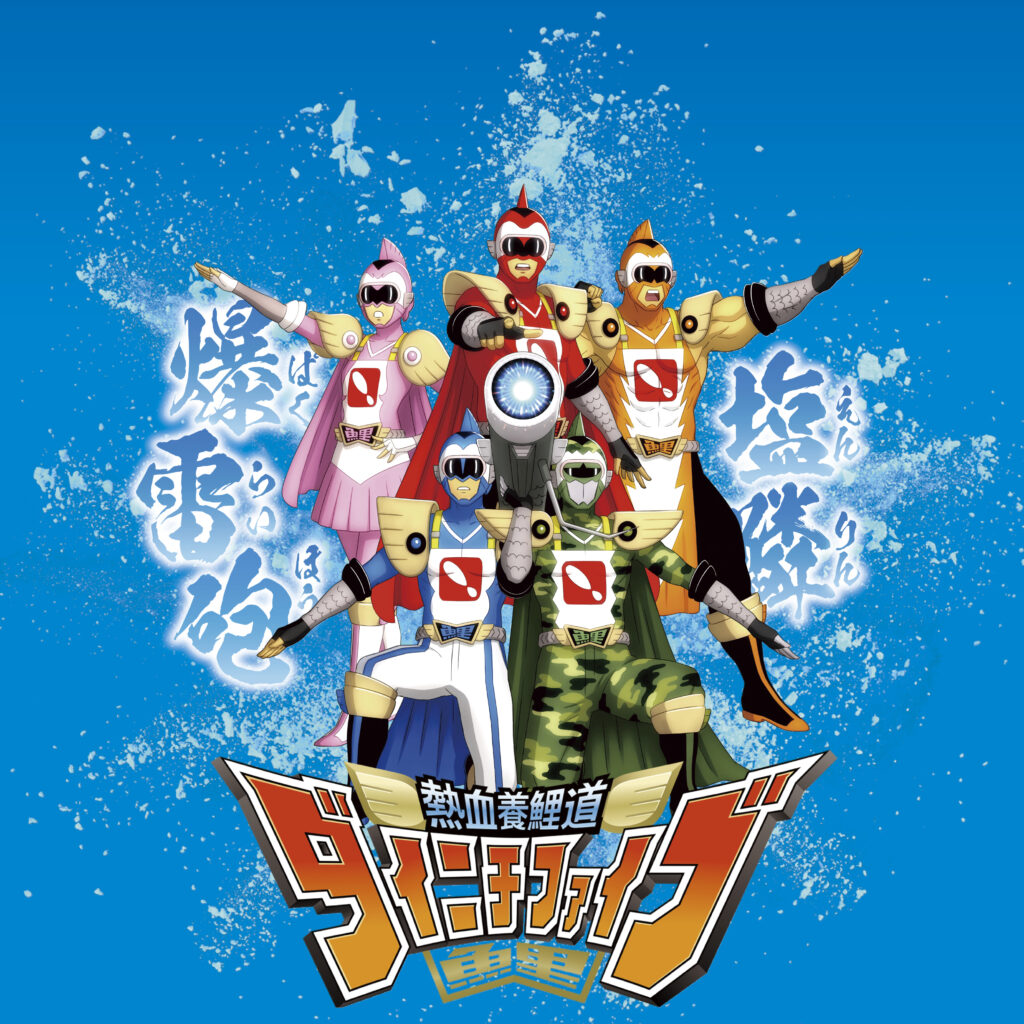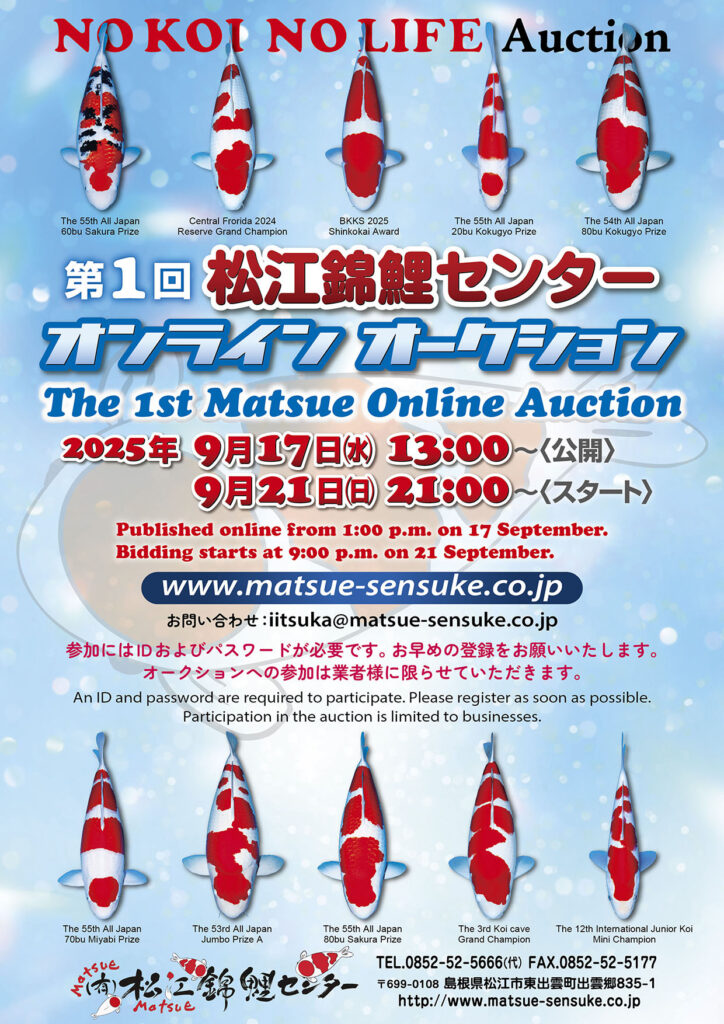F (offspring of Hakuto)
—This is a koi with a good pattern even among Hakuto.
Hiroaki: When it was tosai, it was a bit small. Compared to the other koi, I think we put it into the pond while it was still small. It grew steadily in the pond, and I think that shows the strength of Hakuto.
—Since the pattern is good, once sashi and kiwa tighten up, it should become a very nice koi.
Hiroaki: Hakuto develops sashi very nicely. Hakuto’s parent, a koi named Toka, was produced by mating with a male from Murata Nishikigoi Centre, and the sashi was very deep. As a result, there was a three-year period during which we didn’t breed from Toka. If the sashi comes out too strongly, it’s harder to sell. But afterwards, all the offspring had beautifully balanced sashi, so we started breeding Toka again with a different male. Hakuto also tends to show sashi-edges, but by three or four years old, they come together beautifully. This is part of the charm of keeping koi for the future.
—I think this is a koi that can be keeping for the future while still enjoy at shows.

G (offspring of Setsuren)
Hiroaki: Ever since we started mating Setsuren with a new male, the beni has begun to exhibit a ‘male-type’ quality. You wonder, is it a male? Or a female? The beni has that kind of impression. This type of Setsuren doesn’t risk breaking its beni when raised in a concrete pond, and the pattern is good, so it’s pretty good for any shows.

H (offspring of Setsuren)
Hiroaki: This is a koi with a body typical of Setsuren. The beni is one tone lighter and is the type that lasts a long time. I think this koi will become very successful in the future. This koi came up the day after the sale.
—The koi left in the pond were slow to come up, and we were getting impatient waiting. Then this one suddenly popped up, and we said, ‘Ah, here’s the best one!’ (laughs). I think this is a very interesting koi.


